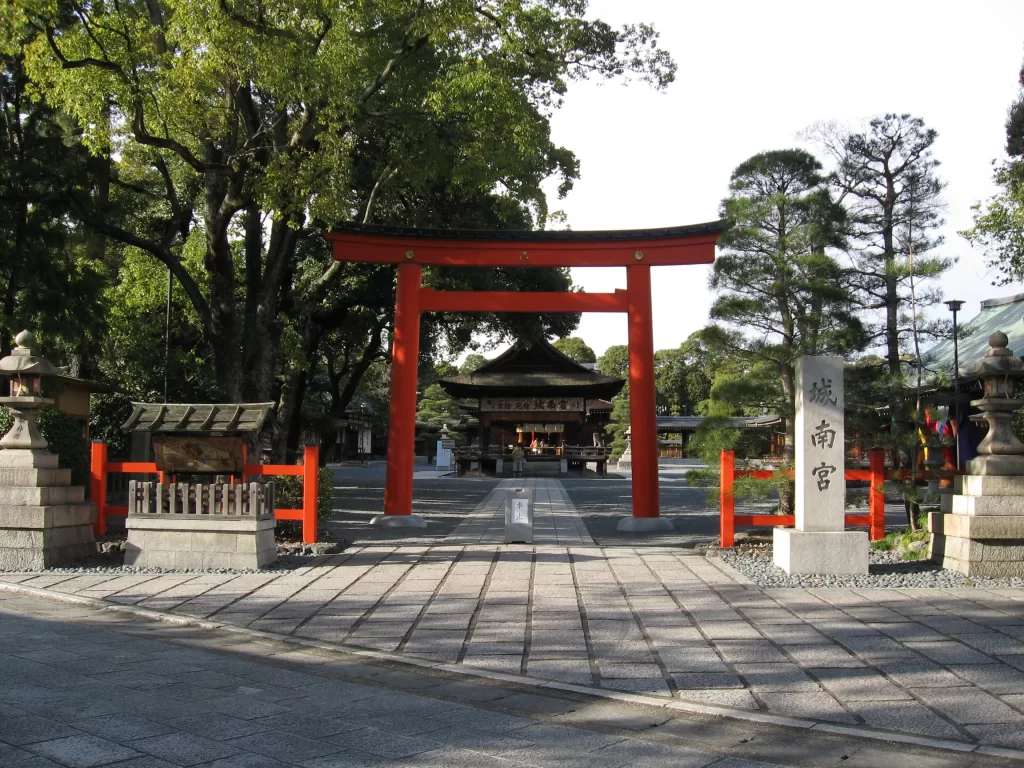The Revival of the Kyokusui no Utage Ceremony in Kyoto
Rebirth of an Ancient Tradition
Delving back into history is a passion for the Japanese, and one tradition enjoying a resurgence is the Kyokusui-no-utage. Created as a sort of sublime blend between wine and song, the tradition originally hails from China, was embraced by the Japan in the 5th century A.D., peaked in the late Nara era, then eventually fell out of fashion around the 10th century.
Recently, this esteemed form of entertainment—a favourite amongst nobles from yesteryears—is witnessing a revival. The main stage for this resurgence is Jōnangū Shrine, located in southern Kyoto. Renowned for recreating this ancient tradition twice yearly during spring and autumn, the shrine carries with it echoes of a Heian period noble’s lifestyle.

Elegance Enrobed In Silk
The Kyokusui no Utage—often translated as Wandering Stream Banquet—held at Jōnangū commences at 14:00 on April 29th and November 3rd each year. A collection of local poets embodying Heian period nobility in rich silk robes are given each year’s poetry theme by shrine priests. Taking inspiration from the classic – ‘The Tale of Genji’, these themes center around elements pertaining to that literary masterpiece.
Sake, Poetry And Dance
Kyokusui no utage makes for an interesting blend of culture and indulgence – poets pen down waka poetry (consisting of 31 syllables) while relishing sake. Bird-shaped vessels carry small sake cups across a gentle stream with young pages using bamboo poles to ensure their safe passage. It’s one of the most awaited Kyoto events in November.
While poetry and sake form the crux of this beautiful ritual, it’s almost impossible to overlook accompanying cultural riches like imayō dance performances or koto music playing softly in the background. This makes it easy to see why this ritual has re-emerged on modern Japan’s cultural landscape.
Splendors Of The Venue
Jōnangū Shrine overshadows southern Kyoto, with its expansive gardens divided into five sections reflecting different gardening styles spanning Japanese history. In spring, these gardens spring to life with irises, azaleas, and wisterias adorning its stretches.
Upon witnessing this glamorous spectacle unfolding against such scenic surroundings, onlookers are left marveling at how aesthetically engaging history can be!
After participating in Kyokusui no utage or just admiring it from afar, do take time to explore these verdant spaces echoing with age-old traditions. Seasons render different hues and moods to these gardens making every visit unique.
Carrying Forward The Legacy
Drawing further back in time helps shed light on how far this poetic tradition dates back in history. Noted instances date as far back as March 485 A.D., hence making it an integral part of Nara era (710-794). Undergoing changes over centuries, witnessed primarily during Heian period (994-1185), it evolved into aristocrats’ play and social meeting place too — adding a recreational twist to what initially started off as literacy enhancement initiative.
Today’s celebrations often occur along Nara no Ogawa river — part of Kamigamo shrine where professional poets wearing Heian period costumes write poems under designated themes before sharing their creations with eager audiences for a nominal fee (1000 yen including maccha/green tea).
Adding picturesqueness to proceedings is the shrine itself – nestled amidst Fushimi – an area famous for sake breweries – offering insights into not only past traditions but also present indulgences.
Ultimately what stands out through rituals like Kyokusui no Utage is Japan’s commendable effort to keep alive its elaborate and endearing cultural heritage while paving way for historical exploration through activities that civilizations before us enjoyed thoroughly.

Rules To Remember
While Kyokusui no Utage is open to all with free entry to Shin’en Garden on event days (normal days carry an entrance fee), there are certain rules visitors need follow:
- Eating, drinking, or smoking inside garden premises is strictly forbidden.
- Pet animals cannot accompany visitors
- Group visits aren’t allowed due to space constraints.
- Owing to limited garden space admission can be restricted when crowds get large.
Stay mindful that while modern twists have been added to appeal better to audiences today, ceremonies like Kyokusui no Utage primarily honor traditions dating back centuries – embedded deeply within Japanese ethos and passed down generations carefully — waiting eagerly now for you to experience their magic!
If you want to immerse yourself in Kyoto’s rich culture and traditions, don’t miss out on the vibrant Aki Matsuri in Kyoto. Experience the beauty of this seasonal festival as you witness captivating performances, indulge in delicious local cuisine, and explore the historic streets of Kyoto. Join the festivities and create unforgettable memories amidst the enchanting atmosphere of Aki Matsuri in Kyoto.